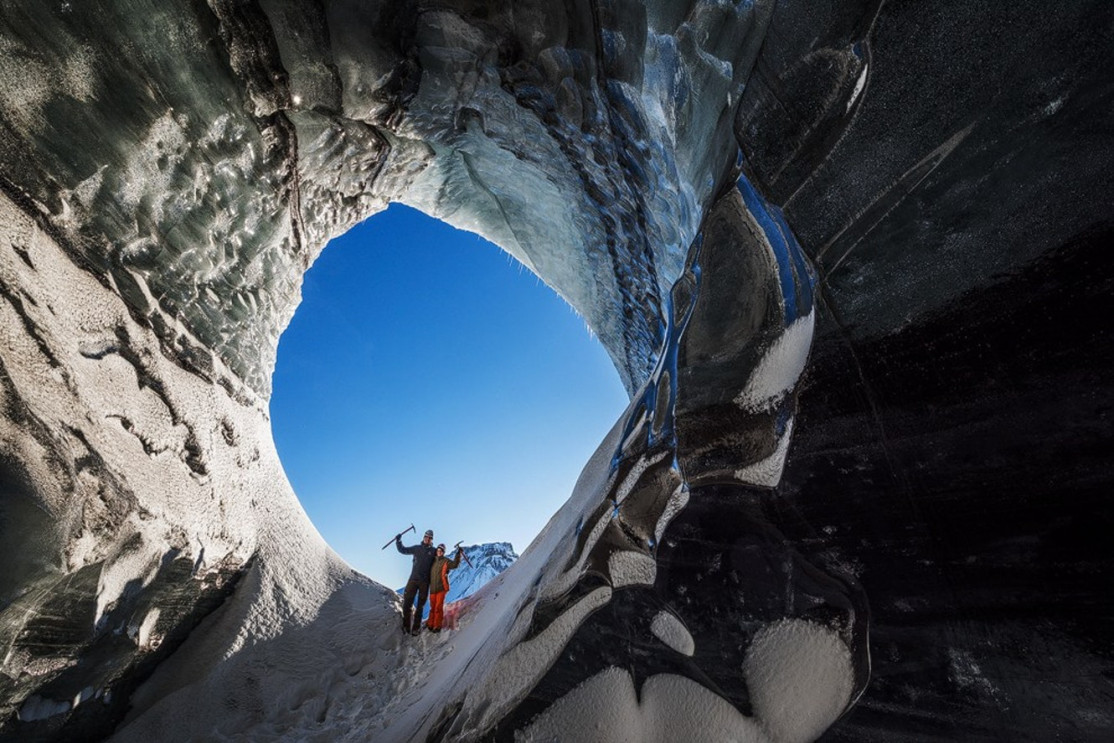The Katla Volcano
Katla is a fearsome Icelandic volcano famous for its devastating eruptions that have marked local history.
Located under the Mýrdalsjökull ice cap, Katla is the neighbor of the famous Eyjafjallajökull, well known to Europeans for blocking all air traffic following a memorable eruption in 2010.
Katla is an active volcano with little reputation, comparatively, but remains much more dangerous than its neighbor Eyjafjöll. Historically, it wakes up twice a century on average. Since its last real eruption was in 1918, specialists are expecting an eruption to occur in the years to come.
Katla: probably the most dangerous volcano in Iceland
Katla literally means “kettle” in Icelandic, a fitting name for a subglacial volcano. The monument rises to an altitude of 1512 m and the crater at its summit is absolutely massive, extending over 14 km long and 10 km wide!
It is surrounded by Eyjafjöll 20 km to the West, Mýrdalssandur to the East and is part of the same volcanic zone as Hekla, Lakagigar and Eldgja...
It is also connected to Eyjafjöll by a network of magma channels, so when one erupts it very often causes an impact on its neighbor. Mýrdalssandur is a vast desert and ultimately serves as a flood plain where glacial meltwater has poured out and shaped the landscape over the centuries.
As with many volcanoes in Iceland, Katla's eruptions are not very explosive because they are subglacial. Eruptions generally occur under the ice sheet of the immense Mýrdalsjökull, which causes what Icelanders call “jökulhlaups”, literally “running glacier”.
As the name suggests, these jökulhlaups are brutally fast and devastating floods that are the direct consequence of lava hitting ice that can cause the sudden emptying of whole glacial lake basin...
The resulting tidal wave then carries everything in its path, all the way to the ocean. The mud flow running down the plains can reach volumes of 100,000 cubic meters generated per second.
This risk of jökulhlaups is one reason why there are very few villages and homes south of Mýrdalsjökull except for the small village of Vik, which has suffered tragic losses from these eruptions in the past. In fact, Vik is home to the Icelandic lava show, an educational exhibit inspired by Katla's historic eruptions.
The recent eruptions of Katla

Katla - Luis @fotolia
-
The 1918 Katla eruption
This was the most recent full-scale eruption of the Katla volcano, and made such an impression that forever after Katla became a popular girl's name in Iceland.
The 1918 eruption caused an immense Jökulhlaup that carried gigantic boulders of ice in a devastating stream of mud more powerful than the of the Amazon River. The transported sediments stretched across the coast of southern Iceland along several kilometers of ravaged shoreline. Locals say an iceberg the size of six houses was found in the sea south of Vik.
For a sense of scale, this Katla eruption generated five to ten times more material than the Eyjafjallajökull eruption of 2010 and Mount St Helens in 1980.
-
The Jökulhaups of 2011
Although not really eruptions but rather pressure valve releases for the caldera, a jökulhlaup in 2011 cut off Road number 1 for some time.
As early as mid-June, specialists observed earthquakes near Katla but it was not until July 8 that sensors on the Mulakvisl River alerted to a significant rise in the waters. Within a few hours, the level of the river had risen by several meters and road number 1 was completely cut off.
Although the damage was not very significant, access could only be restored on 16 July.
Activities near Katla

It is very hard to get to Katla since it is located under the Mýrdalsjökull ice cap. Trail 214 a few kilometers beyond the village of Vik i Myrdal is a magnificent hiking opportunity that goes north towards the Thakgil campsite. This is the only path that approaches it.
From the campsite, numerous hikes take you towards Kötlujökull, Sker, Maelifell or even Jökulshöfuð.
Katla is especially famous for its ice caves. Indeed, from Vik you can take an excursion in a superjeep to the Kötlujökull glacier to explore an ice cave.
Once you arrive, a guide will equip you with a pair of crampons, a helmet and a headlamp before setting off as a group to discover the glacier's ice tunnels and their incredible colors.